Curator Shubhani Sharma says that with the concept of achieving eco-art currency, galleries and museums should do more to promote dialogue and citizens’ participation in protecting nature.
Curator Shubhani Sharma says that with the concept of achieving eco-art currency, galleries and museums should do more to promote dialogue and citizens’ participation in protecting nature.
This is the era of the Anthropocene, but there is no reason to rejoice for the human age that has brought with it pollution, deforestation, climate change and other misdeeds that have disrupted the delicate balance on Earth.
A new eco-art show – ‘Who will speak: Me? You? Or none?’ — Curated by Shubhani Sharma ChennaiApparao Gallery attempts to critique our deeply capitalist approach to climate change and other ecological issues through the works of a group of Indian artists. “The artworks displayed in this exhibition are an example of how artists have attempted to examine the relationship between humans and nature,” says Sharma.
Chinmayi Patel’s ‘REM'[A]INDER’ – Made using waste plastic, styrofoam, fishing nets, fabric and thread.
The curator said the year-end exhibition aims to inspire artists and audiences to think about the environment and work in a meaningful way to bring about a change in the new year. Anirudh Singh Shaktiwat, Atul Bhalla, Arunkumar HG, Chinmayi Patel, Ishaan Tankha, Manjot Kaur, Meera George, Ravi Agarwal and Sonia Mehra Chawla join the cast.
arts and activism
Working with reclaimed wood, sculptor Arunkumar discusses how to employ the medium itself to speak to the audience. “A piece of wood can tell the forest its own story about where it came from,” he says, using black floor-paint to render the artwork as it symbolizes the carbon waste that results from burning wood. .
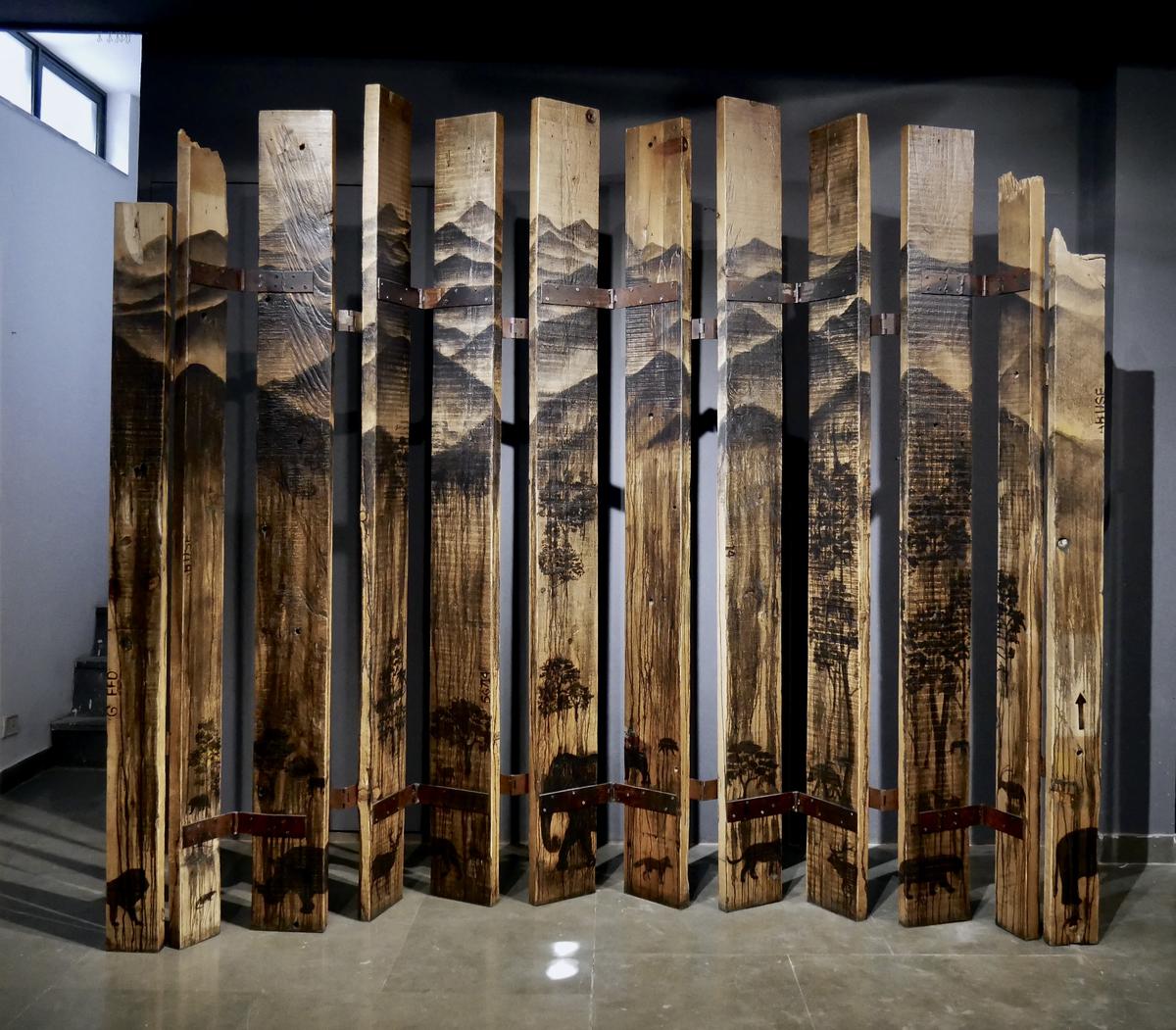
Arunkumar HG’s ‘Relics’ – Upcycled lumber from an industrial scrapyard, steel hinges and floor paint.
Painter Mira George also looks at the effects of greenhouse gases, bleached coral reefs and melting ice caps in her mixed media artworks.
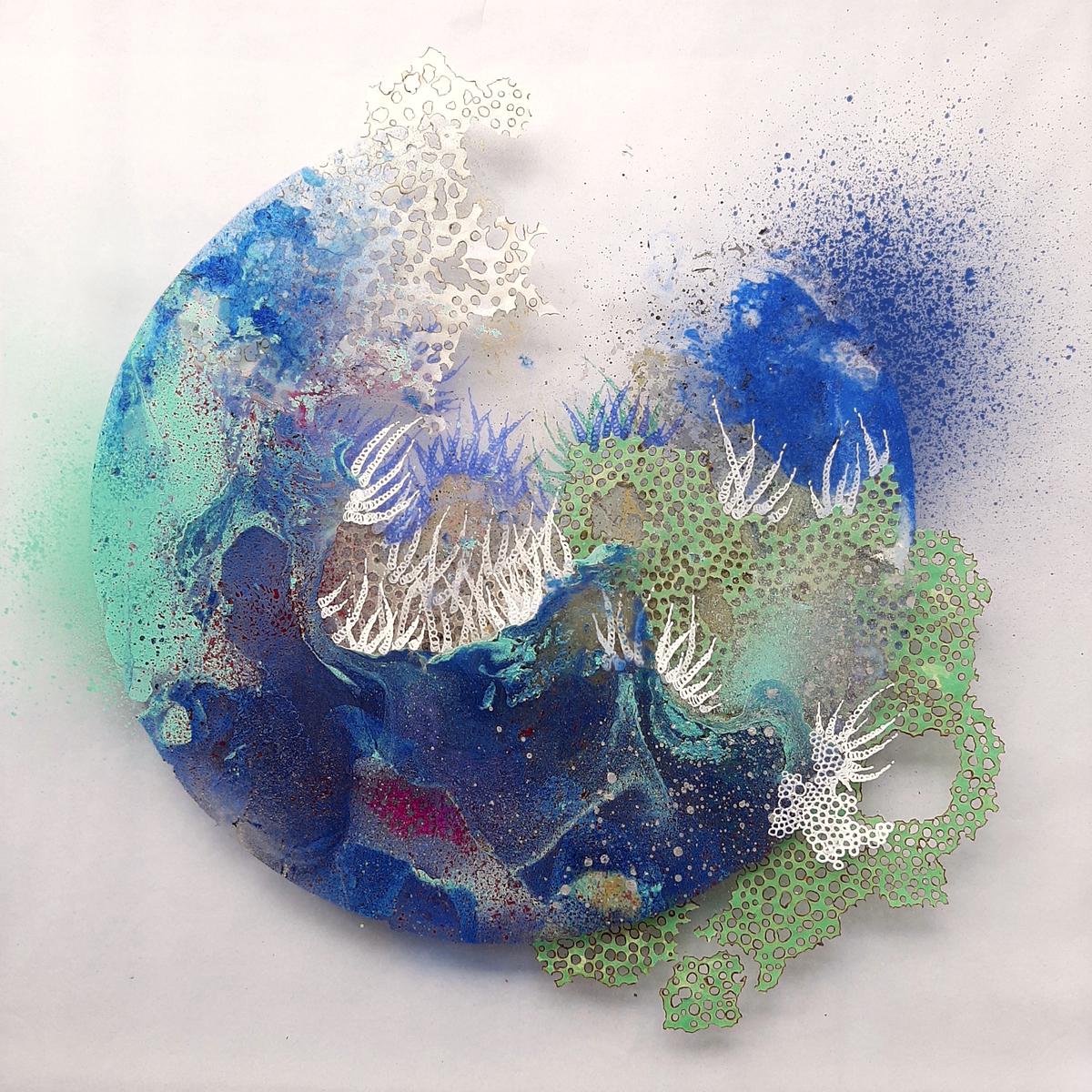
‘Lapsus’ by Mira George.
Spanning the space between art and activism, photographer Ravi Agarwal uses images to examine what the ocean means to fishermen. “We have always had a tendency to fixate an image through a photograph, but the ocean is not static, which is why I experimented with photographs to capture the feeling of movement,” he says. “This is the first time the sea attracted me to examine it closely. It was because of the fishermen and their relationship with them.”

Ravi Agarwal’s ‘Sea of Mars’, archival photographic print, is based on an open source NASA photograph of Mars.
Agarwal also uses NASA’s image to create ‘Sea of Mars’, a speculative work that talks of ecological change, sustainability and contemporary life.
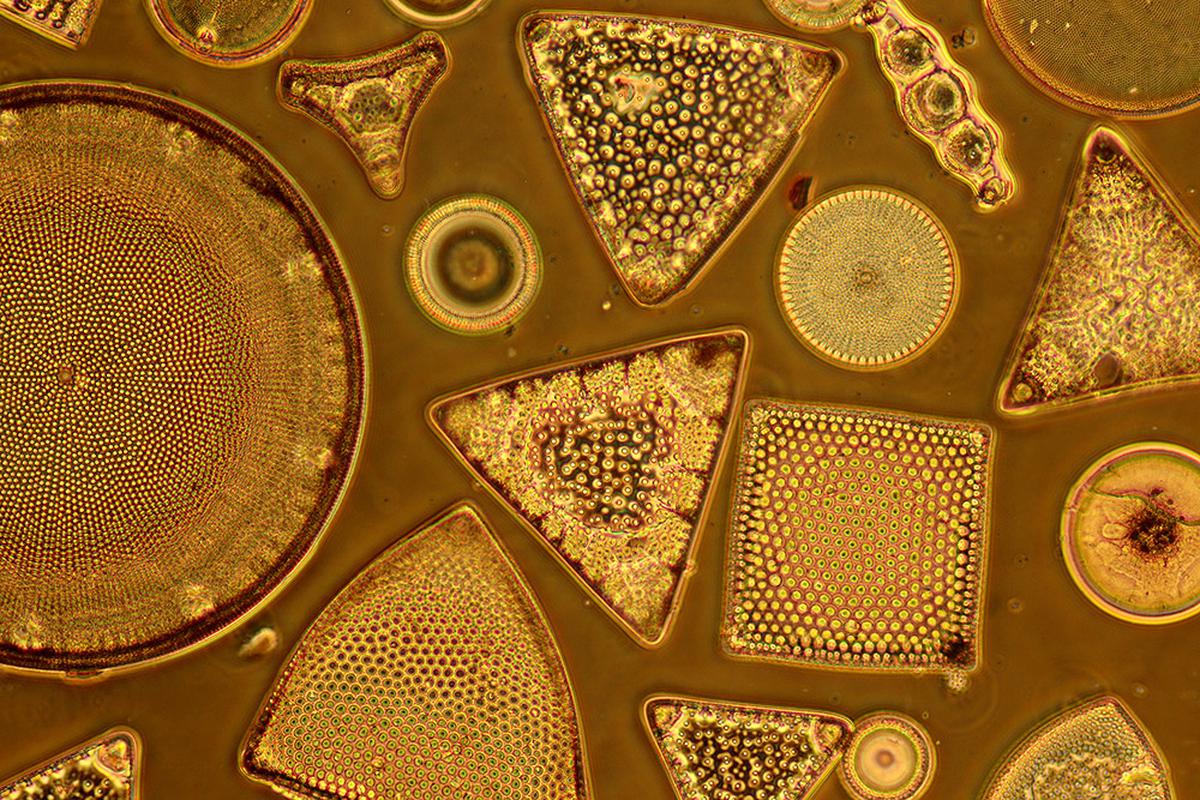
‘Vital to Life: Drifters and Wanderers III’ by Sonia Mehra Chawla – engraved engraving with photomicrograph.
fishermen of chennai
Interestingly, conceptual artist Atul Bhalla also trained his eyes on the sea, and fishermen from Chennai, possibly being ‘natives’ of the beach, who, during British rule, ‘cleaned’ the seaside for the boulevard. ‘ was part of. Marina Beach. “My ‘notes’ to Kasimedu are an attempt to reveal and question how we try to ‘hide’ history,” he says. “They bear the brunt of the changing nature of the ocean, from rising sea levels to the daily grind.”

From Ishaan Tankha’s ‘Jal Satyagraha’ series.
Ishaan Tankha’s series pulledwater satyagrahaIn Madhya Pradesh, where people sat in water for several days to protest their land grabbing by the government. Their demands were simple – fair and adequate compensation for uprooting themselves from their land and livelihood. “I shot these photos back in 2013, but they are still relevant as things have not changed and the approach is the same for large hydro-power projects,” says Tankha, both a photo-journalist and artist.
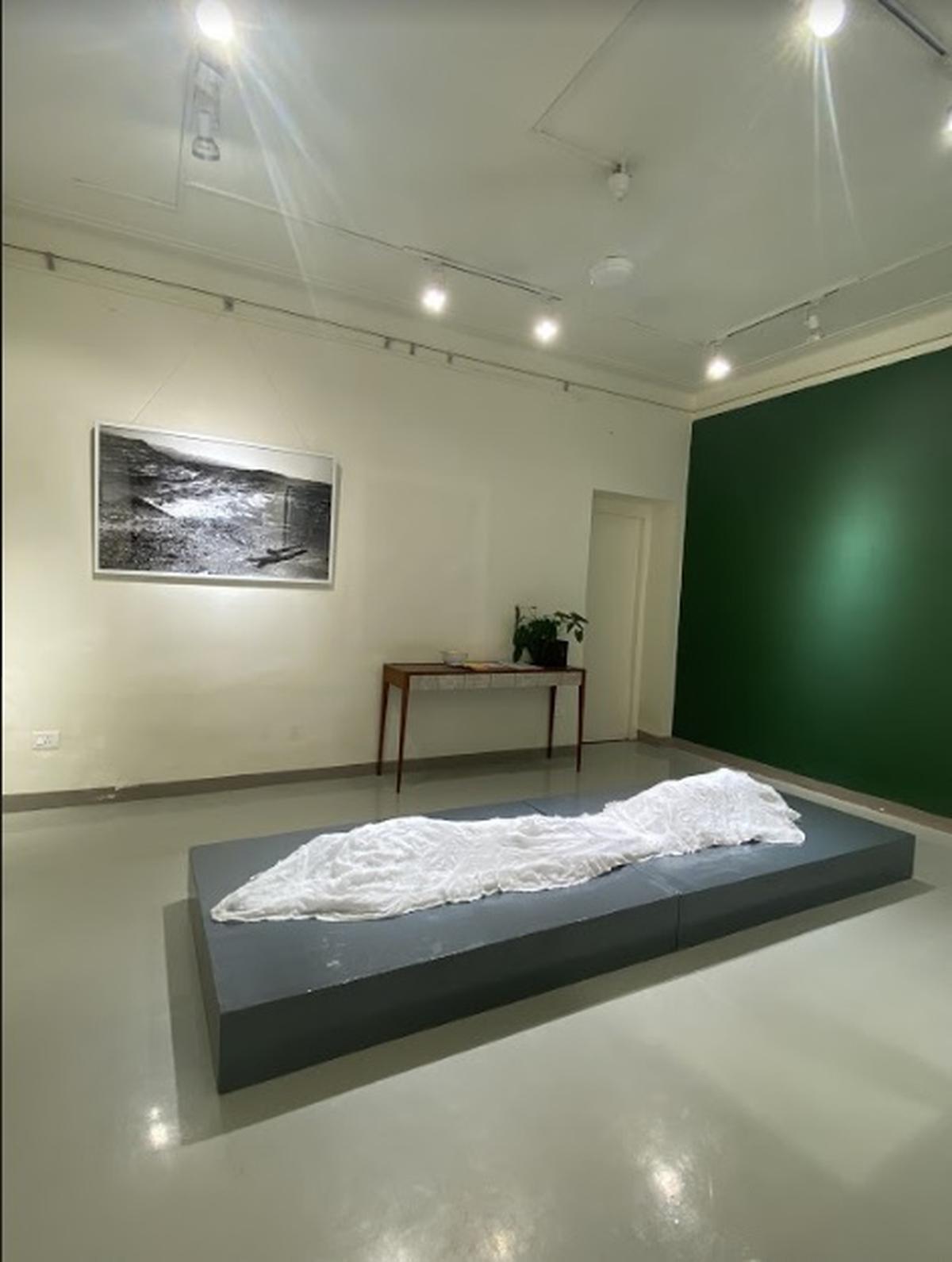
Anirudh Singh Shaktawat ‘Snake is a formless creature / Mountains do not move’.
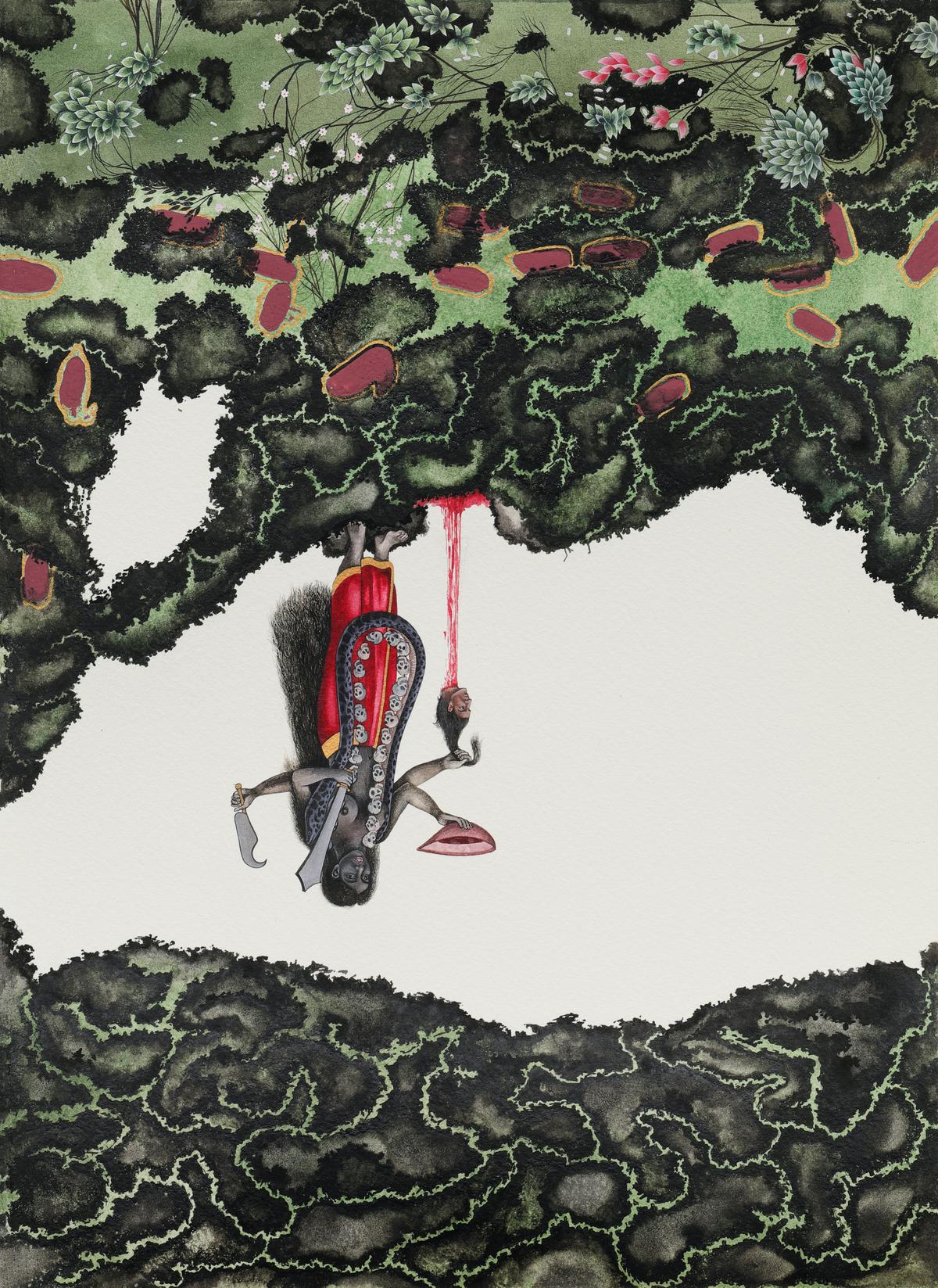
Manjot Kaur’s ‘There She Stands’.
Curator Sharma says that with the concept of eco-art gaining globally acceptance, “the idea is to use the platform to advance ecological ideas and raise awareness of issues that are caused by all anthropogenic activities of humanity”. facing.” “It is much more than just the buying and selling of art. It is important that galleries and museums adopt and host more activities related to ecology. This will encourage dialogue and foster greater participation of citizens in protecting nature.”
‘Who will say: Me? You? Or none?’ Apparao Gallery, Chennai on view till 30 November 2022.
The writer is a critic-curator by day, and a creative writer and visual artist by night.